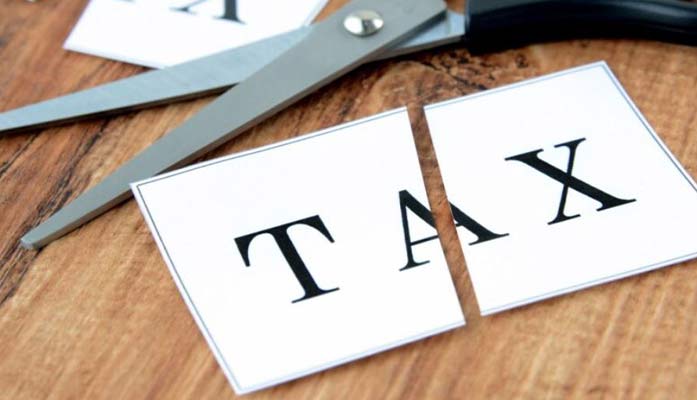
by Ethan Faverino | Jul 17, 2025 | Economy, News
By Ethan Faverino |
Scammers are posing as recruiters, offering tempting remote job opportunities to steal your money or personal information.
The Better Business Bureau (BBB) is urging consumers to stay vigilant, as job scams continue to rise. According to the Federal Trade Commission (FTC) over 103,000 employment scam complaints were made in 2024, resulting in an overwhelming $220 million in losses.
Fraudulent recruiters claim to represent well-known companies and reach out via email, text message, or even social media platforms such as LinkedIn and WhatsApp.
These messages often come from personal email accounts like @gmail.com or @yahoo.com rather than corporate domains.
Scammers may send what appears to be an official invitation for a virtual interview, complete with job descriptions and benefits.
However, they often move quickly, extending job offers and sending paperwork that requests sensitive information, such as bank account details, Social Security number, or even in some cases, cryptocurrency payments for “training” or “equipment.”
According to the BBB’s 2024 Scam Tracker Risk Report, employment scams ranked among the top five riskiest scams, with a medium loss of $1,500 per victim.
It is important to remember that legitimate employers do not request sensitive information or payment until after a formal hiring process is complete.
There are multiple ways to spot a job scam.
Make sure to check the sender’s email address or contact details. Legitimate recruiters use verified company emails or phone numbers, not personal accounts like Gmail and Yahoo.
Watch out for requests for personal information or any form of payment. Make sure that you are not asked to share your Social Security number, driver’s license number, bank details, or make any upfront payments before an interview or offer.
The FTC reported that 68% of job scam victims shared personal information before recognizing the fraud.
If you are unaware or uneasy about the recruiter or the company, you can always search for the name and companies online to confirm legitimacy. Most of the time you can go straight to the company’s official website or HR department or use other websites like the Better Business Bureau to make sure the recruiter and or company is legit.
Always be skeptical of job offers that are “too good to be true.” Job offers that promise high pay for little work or include vague responsibilities should raise concern.
The BBB notes that 43% of job scam complaints involved remote work offers, often targeting younger job seekers.
Ethan Faverino is a reporter for AZ Free News. You can send him news tips using this link.

by Matthew Holloway | Jul 16, 2025 | Economy, News
By Matthew Holloway |
Arizona Republican Congressman Abraham Hamadeh (R-AZ08) issued a call this week for Jerome Powell, Chairman of the Federal Reserve, to resign. Hamadeh cited a series of failures from Powell in an official Congressional letter sent on Sunday.
“My call for Chairman Powell’s resignation does not come lightly nor without good cause,” stated Congressman Hamadeh. “Considering the recent revelations by Office of Management and Budget Director Russell Vought about Chairman Powell’s gross mismanagement of the Federal Reserve’s headquarters renovation project, and his apparent lack of candor before the Senate Banking Committee, neither does my call come too soon.”
In a post to X Monday, Hamadeh further stated, “Jerome Powell has lost the confidence and ability to effectively Chair the Federal Reserve.”
Senators pressed Powell hard on the ongoing $2.5 billion renovation of the Fed’s headquarters during the Chairman’s semiannual monetary policy hearing before Congress in June. Sen. Tim Scott (R-SC) critcized Powell for the renovations, referring to them as “luxury upgrades that feel more like they belong in the Palace of Versailles.”
James Blair, a White House deputy chief of staff, announced in a post to X, “The Federal Reserve’s Inspector General is considering opening an investigation into the massive cost overruns for their $2.5B+ HQ renovation project.”
Blair was appointed to the National Capital Planning Commission which holds oversight over the project last week.
In his letter calling for Powell to step down, Congressman Hamadeh echoed the words of Director Vought, who questioned the “ostentatious” overhaul of the Federal Reserve Campus and also cited the Chairman’s “failure to accurately assess the effects of tariffs” and “refusal to lower interest rates for the good of the nation in a timely manner,” as causes. He added, “This renovation is $700 million over budget at a time when your political game playing is wreaking havoc with Americans’ budgets. In fact, it is your failure at the Fed that has caused home ownership to be cost prohibitive for too many young families, denying them access to one of the most important facets of the American Dream.”
Hamadeh continued by highlighting Powell’s failed predications on the Trump administration’s tariff system.
He wrote, “Aside from the burden you have placed on taxpayers, who must foot the bill for your frivolous fabrications, you have failed to properly assess the impact of President Donald Trump’s tariff policy. Contrary to your predictions, increasing tariff collections are helping improve government finances with the U.S. Treasury Department posting a $27 billion budget surplus in June 2025.”
Hamadeh acknowledged that “White House economic adviser Kevin Hassett has said that President Trump has the authority to fire Chairman Powell for cause,” but added that “it shouldn’t have to come to that.”
He concluded, “Chairman Powell needs to accept the fact that his political game playing has led to harmful failures and step down for the good of the country.”
Matthew Holloway is a senior reporter for AZ Free News. Follow him on X for his latest stories, or email tips to Matthew@azfreenews.com.

by Ethan Faverino | Jul 15, 2025 | Economy, News
By Ethan Faverino |
A new report reveals a rise in financial cybercrime across the United States, with Arizona ranking 47th out of the 50 states and Washington, D.C., as one of the riskiest states.
Based on the FBI’s 2024 Internet Crime Complaint Center (IC3) annual report, the findings highlight a national rise in crime frequency and financial impact. Arizona is among the states that faced significant challenges due to high victim counts, staggering losses, and inadequate legislative protections.
Arizona reported 2,239 victims per million residents in 2024, which was well above the national average, totaling $337 million in financial losses.
The state experienced a 61.02% increase in victim counts and a 51.84% rise in losses from 2022 to 2024. These losses are driven by an increase in high volume scams such as phishing, tech support fraud, and identity theft.
With a weighted score of 59.305 and only 10 cybersecurity-related laws, Arizona’s legislation has not kept up with the growing scale of cybersecurity threats.
Nationwide, financial cybercrime losses more than doubled from 2022 to 2024 reaching billions in reported damages. The report mentions that most states, including Arizona, saw double-digit increases in either victim counts or monetary losses.
Nationally, cyber security intrusions rose 613% from 2013 to 2023. In 2023 alone, there were 7.6 trillion hacking attempts, and 6.06 billion malware attacks recorded.
Americans lost $25.4 billion to phone phishing scams last year, and ransomware attempts occur nearly 20 times per second.
Cybercriminals are targeting multiple sectors, with the financial industry hit by 95.7% of successful attacks in 2023, costing $5.90 million per data breach.
The healthcare sector faced the highest breach costs at $10.93 million, while 43% of cyberattacks target small businesses.
The retail sector lost $2.9 million per breach, and the banking industry’s cybersecurity market is projected to grow from $74.3 billion in 2022 to $282 billion by 2032.
These trends show the broad economic toll, with the average global data breach costing $4.88 million in 2023.
Ethan Faverino is a reporter for AZ Free News. You can send him news tips using this link.

by Jonathan Eberle | Jul 12, 2025 | Economy, News
By Jonathan Eberle |
A new report from the Common Sense Institute (CSI) signals that Arizona’s housing market may be headed for deeper trouble, even as homebuyers enjoy a short-term dip in prices. The think tank’s second-quarter analysis shows that slowing permitting activity is threatening to exacerbate the state’s chronic housing shortage.
In Greater Phoenix, average home prices declined by 1.0% in the first quarter of 2025 and are now down nearly 7% from their July 2022 peak. However, experts warn the modest drop masks deeper affordability challenges. The average Arizona home is still more than 50% more expensive than it was in 2019, and monthly mortgage payments have more than doubled during that time.
“We’re seeing some surface-level relief in pricing, but the fundamentals of the market still point to serious long-term issues,” said Zachary Milne, Senior Economist and Research Analyst at CSI. “Without an increase in new housing supply, prices are likely to rebound—and affordability will remain out of reach for many.”
While the current increase in for-sale inventory is helping to cool the market slightly, CSI analysts caution that these effects may be fleeting. Without local reforms to streamline permitting or reduce regulatory burdens, housing supply will continue to lag demand—keeping pressure on prices and limiting options for would-be homeowners.
“The bottom line is that Arizona is not building fast enough to keep up,” Milne added. “Unless that changes, the state’s affordability problem will only get worse.”
As policymakers and local leaders grapple with how to address Arizona’s housing needs, the latest data underscores a growing consensus: the state’s structural housing shortage is not going away anytime soon—and relief for buyers may prove temporary.
Jonathan Eberle is a reporter for AZ Free News. You can send him news tips using this link.

by Matthew Holloway | Jul 8, 2025 | Economy, News
By Matthew Holloway |
Although the causes are attributed to various factors by different sources, largely dependent on political leanings, one irrefutable fact emerged on Monday. During Governor Katie Hobbs’ tenure, Arizona has plunged from a ranking of 4th place in the nation in job growth, to 47th.
On Monday, Russ Wiles, writing for the Arizona Republic noted, “AZ no longer ranks near the top for job creation,” and asked rhetorically, “What went wrong?”
Citing figures from the U.S. Bureau of Labor Statistics, the Republic reported that Arizona now ranks in 47th place among the fifty states, just ahead of Massachusetts, West Virginia, and Iowa. The report cited a net loss of 1,900 jobs year-to-date in 2025.
In 2020, at the height of the first Trump Administration and under former Gov. Doug Ducey’s tenure, Arizona ranked third in the nation for economic momentum.
In 2019, the Phoenix Metro area even beat out the largest cities in California, Texas, and Florida to take the #1 slot for job growth.
More recently, in a March 2024 statement, Hobbs touted that Arizona ranked 4th in job growth, and tripled the national average in workforce growth. In the pronouncement, which has aged quite poorly, the governor even dubbed herself “Governor Katie Jobbs,” and credited the “81,800 jobs created,” to “investments in housing, healthcare, infrastructure, childcare, and education.”
Meanwhile, a Goldwater Institute op-ed in January, predicting an acrimonious budget battle that materialized over the next five months, pointed out Hobbs’ askew priorities. While the beleaguered Democrat focused on defeating Arizona’s popular Empowerment Scholarship Account program (ESA) and presided over a surge in crime, her failure to account for $800 million in statutorily required Medicaid spending and an affordable housing crisis represented “fiscal mismanagement at its worst.”
AZCentral’s Russ Wiles, in working to answer “What went wrong?” addressed one factor in the decline as “slowing migration, with fewer people moving here from other states,” which dovetails with the affordable housing issue and the Arizona Department of Water Resources (ADWR) rule cracking down on new developments.
Lee McPheters, director of the Economic Outlook Center for Arizona State University’s W. P. Carey School of Business, noted to the outlet, “With domestic migration trending down and international migration dropping off a cliff in 2025, the impetus for population growth has diminished and undoubtedly plays a role here.”
In May, Goldwater launched a legal battle against the Hobbs administration over the ADWR’s controversial new rule imposing the requirement of a 100-year “unmet demand” groundwater supply rule across wide swaths of the state, essentially choking out new housing development.
In addition, as Wiles notes, construction employment has been further weakened by rising material costs, with overall job growth stunted by tariff uncertainty and high interest rates.
Large scale layoffs, such as Nikola Corp.’s 855 jobs lost to its February bankruptcy and Joann Fabrics’ layoffs of 374 employees in January, also factored in heavily. While not directly attributable to Hobbs’ actions, the losses drew a spotlight to a lack of decisive action from Hobbs to attract new employers to Arizona in the short term.
Another factor, unmarked by AZCentral however, has been the $1.6 billion deficit under Hobbs which forced budget cuts, including Department of Economic Security layoffs that directly contributed to the 1,900 net job loss. As Common Sense Institute of Arizona (CSIAZ) explained in June, rather than being caused by Arizona’s flat tax, the shortfall was caused by a massive increase in spending under Hobbs.
“If spending had followed historical trends, Arizona would have had a $4.3 billion surplus rather than a $1.6 billion cash shortfall last year,” CSIAZ wrote.
Hobbs’ vetoes could present the most egregious contribution she’s made. By vetoing 178 total bills in 2025, 73 in 2024, and 143 in 2023, totaling 424 to date, or approximately a third of all bills sent to her desk, Hobbs has prevented the implementation of a comprehensive policy for economic growth from either her administration or Republican leaders in the state legislature from materializing.
Ultimately, Hobbs’ unwillingness to work productively with Republican lawmakers and her active obstruction of legislation to reduce tax burdens, ease regulation, and stimulate job growth may have proven to be as prominent in Arizona economics as it has been in politics. And as prominent Democratic President Harry Truman famously said, “The buck stops here.”
Matthew Holloway is a senior reporter for AZ Free News. Follow him on X for his latest stories, or email tips to Matthew@azfreenews.com.

by Ethan Faverino | Jul 8, 2025 | Economy, News
By Ethan Faverino |
President Donald Trump’s One Big Beautiful Bill, supported by all Arizona’s Republican representatives, was signed on Friday, July 4th. The bill provides the largest tax relief in American history.
Among the bill’s most impactful provisions are no tax on tips, no tax on overtime, and no tax on Social Security benefits.
These policies are designed to put more money back into the pockets of the hard-working American people.
The “No Tax on Tips” provision offers a new deduction of up to $25,000 for workers in tipped industries. Whether tips are received in cash, by charge, or through tip-sharing arrangements, employees will keep more of their hard-earned income.
This measure is expected to save tipped workers nearly $2,000 annually, providing direct financial relief to millions of Americans in these critical industries.
The bill also eliminates taxes on overtime pay. This guarantees that workers who put in extra hours are rewarded greatly with bigger paychecks. This, as well, could also save Americans on average $2,000 a year.
According to a new study from the Council of Economic Advisers, 88% (48 million) of American seniors receiving Social Security will pay no taxes on their Social Security income.
For a single senior receiving the average retirement of $24,000 annually, deductions will exceed their taxable Social Security income. Similarly, married seniors with a combined Social Security income of $48,000 will also see their deductions surpass taxable income.
The One Big Beautiful Bill also delivers an average 15% tax cut for Americans earning between $15,000 and $80,000, significantly boosting take-home pay.
For a typical family with two children, this translates to an increase of up to $10,900 per year in after-tax income. The bill also boosts the standard tax deduction, raising it to $23,625 for married couples and $15,750 for singles, a benefit utilized by 91% of taxpayers.
According to the Council of Economic Advisers, the One Big Beautiful Bill will drive significant growth and fiscal stability. This includes:
- Real wages increasing by up to $7,200 per year
- Real Investment growing by as much as 10%
- Creation of protection of 7 million jobs
- Deficit reduction of up to $11.1 trillion, driven by $5.2 trillion from economic growth, $2.8 trillion from tariff revenue, $1.6 trillion from discretionary spending cuts, and $1.5 trillion from interest savings.
Ethan Faverino is a reporter for AZ Free News. You can send him news tips using this link.






